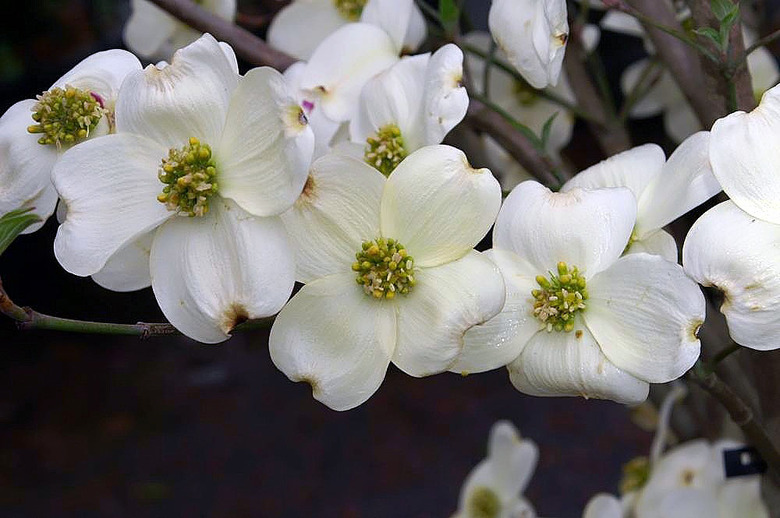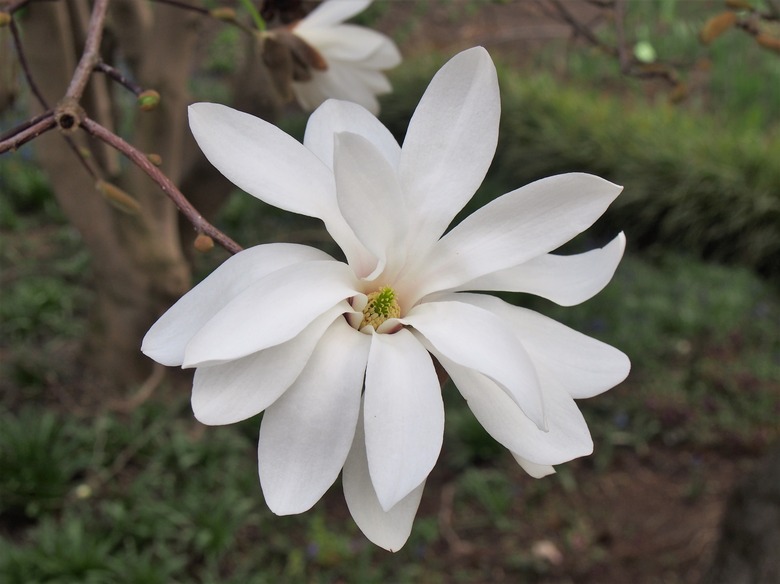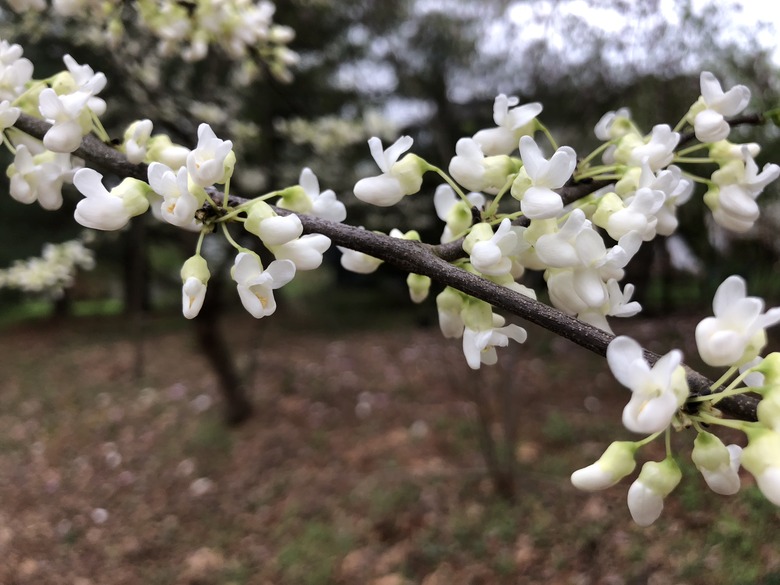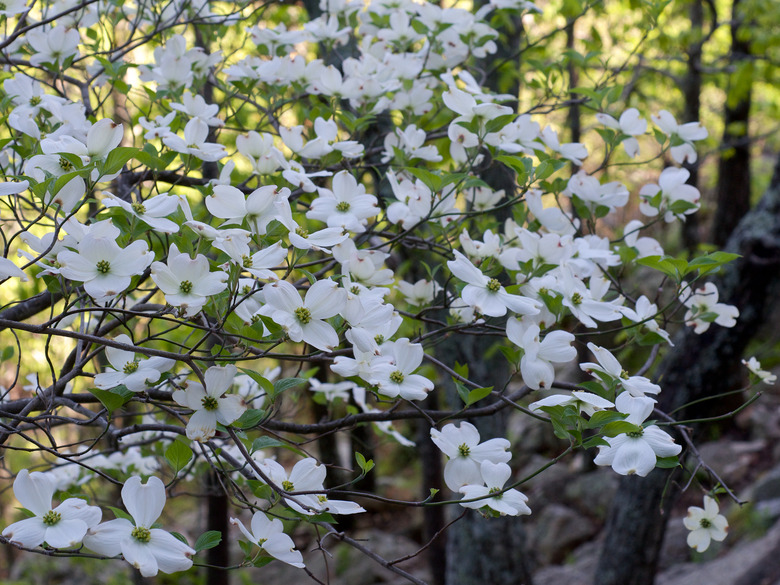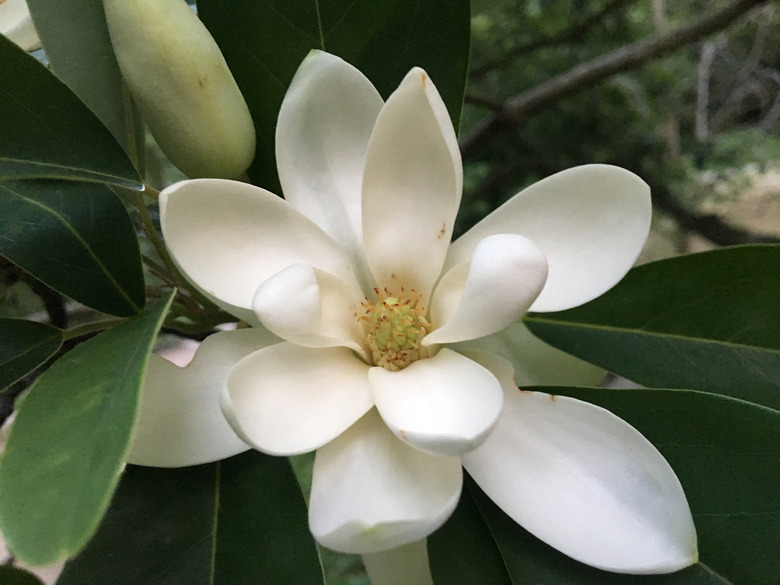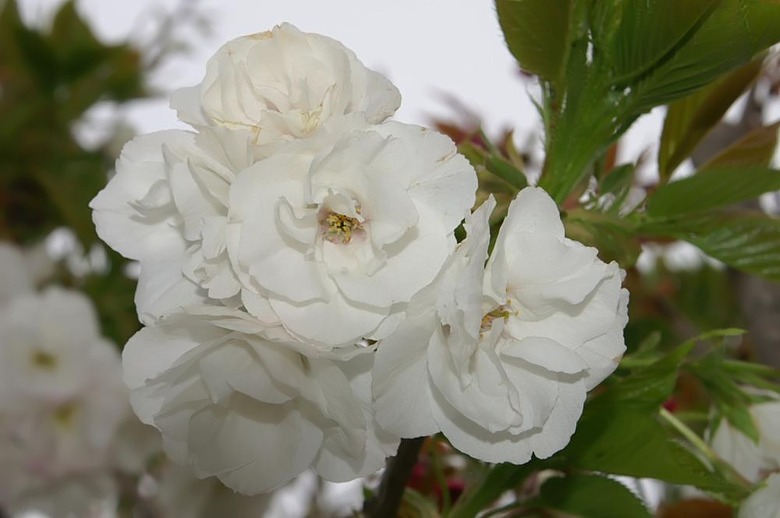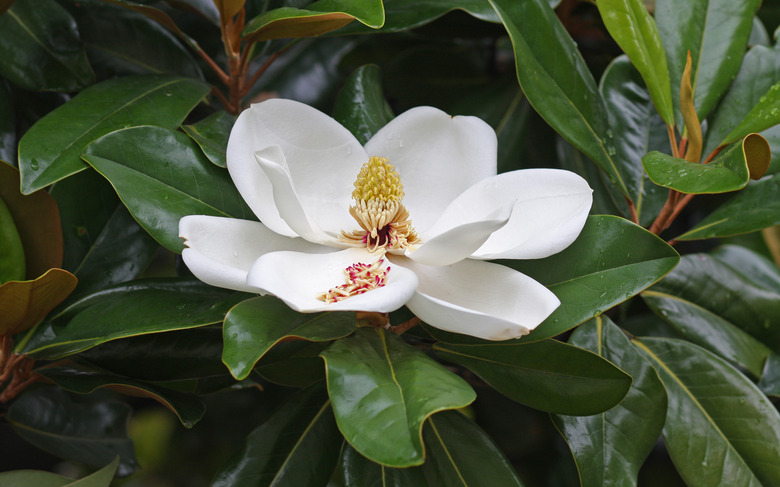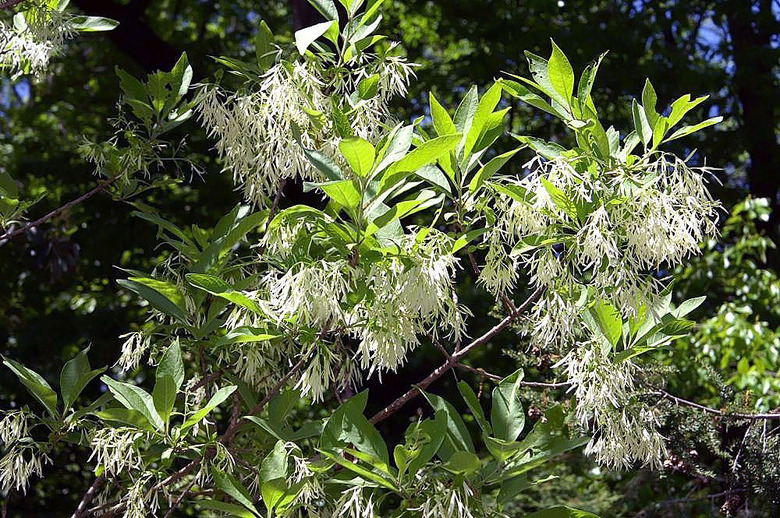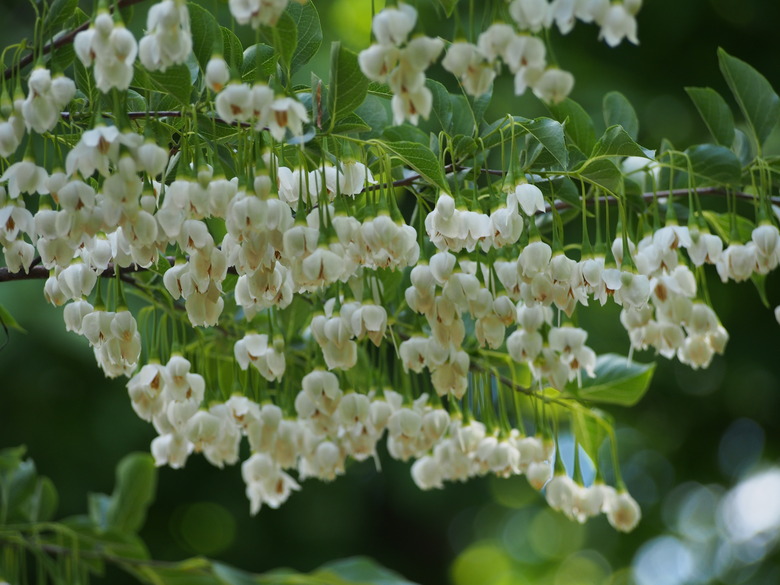White Flowering Trees In The Spring: An Identification Guide
There are few sights more magnificent than a flowering tree in bloom in the spring. White-flowering spring trees bloom at different times and include both evergreen and deciduous trees, some of which offer great fall color as an added bonus.
Early Spring-Blooming Trees
Some ornamental trees with white flowers bloom early in the spring, beginning in March. Let's look at some species in this category.
Star Magnolia
Native to Japan, the star magnolia (Magnolia stellata, USDA plant hardiness zones 5 to 8) is a small tree with a height between 15 and 20 feet. It blooms in March and produces creamy white flowers that are 3 to 4 inches wide and have 12 to 18 petals each.
White Eastern Redbud
The white eastern redbud (Cercis canadensis f. alba, zones 4 to 9), native to eastern North America, produces white pea-like flowers that emerge in early spring before the leaves appear. These white flowering trees typically have a height between 20 and 30 feet.
Flowering Dogwood
The flowering dogwood (Cornus florida, zones 5 to 9) blooms around the same time as the white eastern redbud. This dogwood tree species actually produces clusters of small yellow-green flowers that are not showy. It's the four white bracts that surround the flowers that create the appearance of large, showy blooms.
The flowering dogwood has attractive red fall color.
Tip
The true flowers of flowering dogwoods are inconspicuous. Instead, this tree dazzles with its white, petal-like bracts.
Mid-Spring-Blooming Trees
Some species of white-flowering spring trees bloom in the middle of spring, which usually means in mid to late April. Here are some examples.
Sweetbay Magnolia
The sweetbay magnolia (Magnolia virginiana, zones 5 to 10) is a species native to the Southeastern U.S. that blooms in mid-spring. It may be evergreen in warm climates and deciduous in cool climates.
Flowering Crabapples
Crabapples (Malus spp.) are spring-blooming trees. Some hybrid cultivars, like the fruitless Spring Snow (Malus 'Spring Snow,' zones 4 to 8) have white flowers. Spring Snow blooms in mid-spring and offers yellow fall color. Callaway (Malus 'Callaway,' zones 5 to 8) is another crabapple cultivar that blooms in mid-spring.
Mount Fuji Japanese Flowering Cherry
Cherry blossom trees are synonymous with spring, and some have white flowers, like the Mount Fuji Japanese flowering cherry (Prunus serrulata 'Mount Fuji,' zones 5 to 8). The buds of this cultivar are pink, and the white flowers take on a pink tinge before they fall off the tree.
Late Spring-Blooming Trees
Let's look at some examples of trees with white spring flowers that bloom in late spring and early summer.
Southern Magnolia
The southern magnolia (Magnolia grandiflora, zones 7 to 9), an iconic tree of the southern U.S., blooms in May and June and continues to produce some flowers in the summer.
This broadleaf evergreen has a height between 60 and 80 feet. This is a much bigger tree than the star magnolia, and it is also less hardy.
The fragrant white blooms of the southern magnolia tree are 8 to 12 inches long and have six petals.
Tip
The southern magnolia is a large tree with white flowers that may be up to a foot long.
American Fringetree
Native to the Eastern U.S., the American fringetree (Chionanthus virginicus, zones 3 to 9) gets its name from its fringe-like flower petals. Male trees are considered to have showier flowers than female trees.
Japanese Snowbell
The Japanese snowbell (Styrax japonicus, zones 5 to 9) is another beautiful tree that gets its name from its drooping clusters of bell-shaped flowers that have five petals each. This tree features horizontal branches and has a typical height between 20 and 30 feet.
References
- Missouri Botanical Garden: Magnolia stellata
- University of Wisconsin-Madison Division of Extension: Star Magnolia, Magnolia stellata
- MIssouri Botanical Garden: Magnolia grandiflora
- North Carolina State Extension: Chionanthus virginicus
- Missouri Botanical Garden: Magnolia virginiana
- Missouri Botanical Garden: Cercis canadensis f. alba
- Missouri Botanical Garden: Cornus florida
- North Carolina State Extension: Styrax japonicus
- Missouri Botanical Garden: Malus 'Spring Snow'
- North Carolina State Extension: Prunus serrulata 'Mount Fuji'
- Missouri Botanical Garden: Malus 'Callaway'
